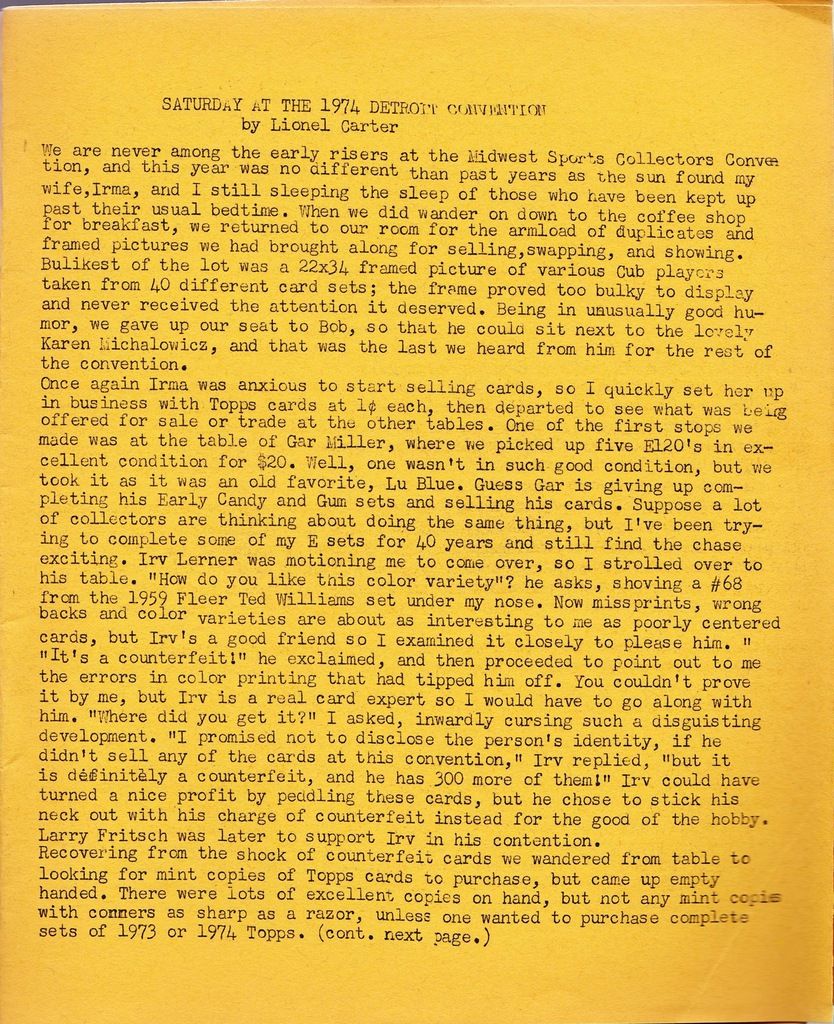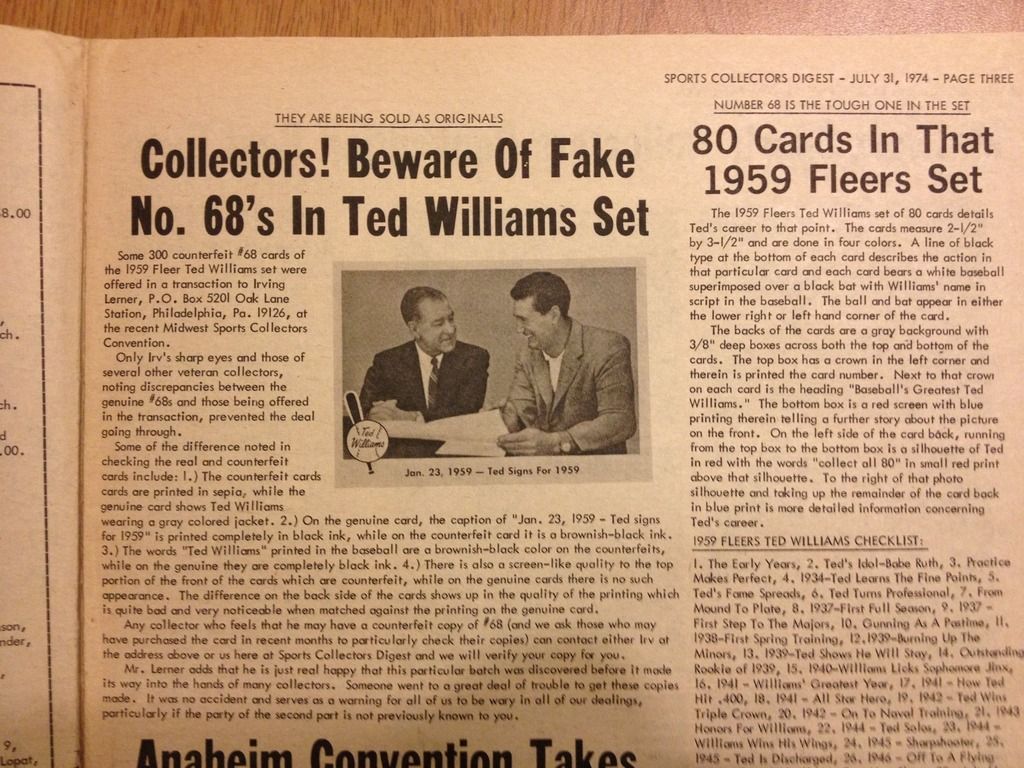In light of the autographed T206 scandal, I thought people might be interested in reading about some of the earliest attempts to pass off fake cards in the organized hobby, in the early 1970s. The first part of this post consists of a slightly edited version of a post I wrote almost two years ago, about the fake-card scandals of 1972. That original post is here:
http://www.net54baseball.com/showthread.php?t=235236. It's interesting to see that the FBI apparently got involved, even though the money involved was orders of magnitude less than today, and that Charles Bray's bimonthly auction in Card Collector's Bulletin got fooled by some of the fakes, marking the first of many times that an auction house got fooled by hobby fraud. Bray removed the cards from the auction when they were pointed out to him, before they had sold.
The last part of this post is drawn from a post of mine about Lionel Carter's account of the 1974 Detroit show (then the de facto National), at which Irv Lerner showed him some fake copies of 1959 Fleer Ted Williams #68 (that set's rarity, then a hot item in the hobby) that somebody had tried to sell to Lerner. I've posted the first page of Carter's account of the second day of the convention, followed by an article about the fakes from Sports Collectors Digest, as part of their coverage of the convention.
*******************************
Collectors today know that fakes are all over the hobby, and that you always need to be on the lookout for them, especially when dealing with high-end cards. That's one of the reasons grading services have become so popular. But this wasn't the case in the early days of the organized hobby, when the idea of a fake baseball card never would have occurred to anybody. This was mainly because virtually no cards were worth enough to make it worth a counterfeiter's time and effort. Also, when advanced collectors bought or traded cards, it was either with people they knew, or through the mail with the buyer writing a check. I've read through a lot of hobby publications from the 1950s and 1960s, and I've never seen any references to fake cards, or people worrying about fakes.
This changed in the 1970s, once the hobby became more organized and prices began rising substantially. It was inevitable that fake cards were going to enter the hobby at some point, as the economic incentives started getting greater. I can't claim to know for sure when the first fake baseball cards were made, but the first instance of fakery to become widely known in the hobby happened in the spring of 1972. Rich Egan, one of the leading researchers on prewar baseball card sets over the previous decade, reported on the situation in the May 1972 issue of The Ballcard Collector (#80), in the two articles below. An antique dealer named Janet Hellein in Newark, Delaware had been writing to prominent collectors listed in Who's Who in Card Collecting, offering Old Judges and several more obscure sets for sale. She had apparently failed to deliver many of the cards people had bought from her, leading to an investigation by the U.S. Postal Service and the FBI, and some of the cards she did deliver were counterfeit, according to Egan. They included fake Old Judges, Home Run Kisses, D350-1 Standard Biscuit cards, and Henry A. Johnson cards.
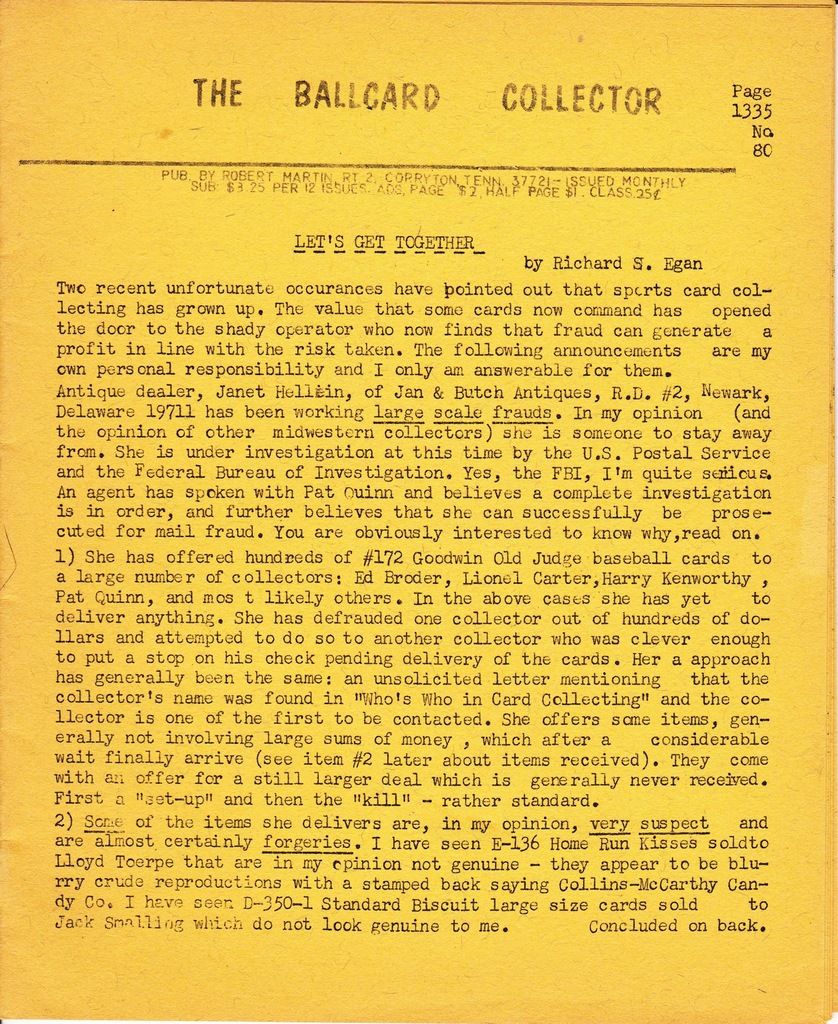
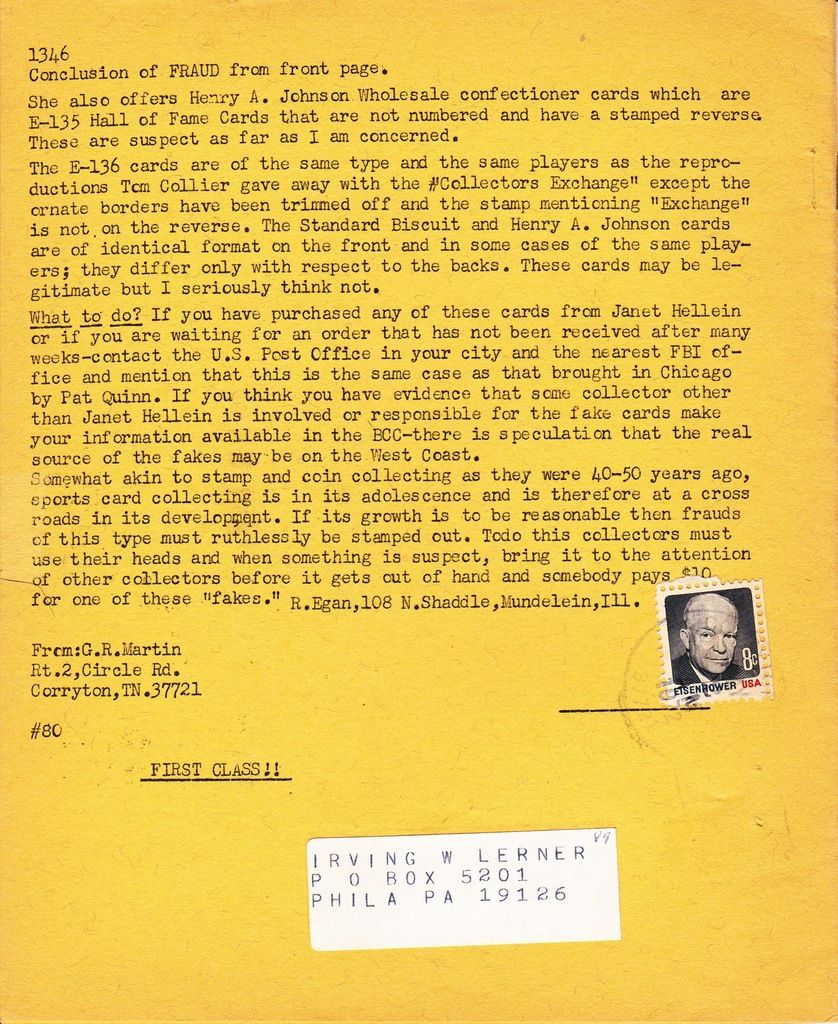
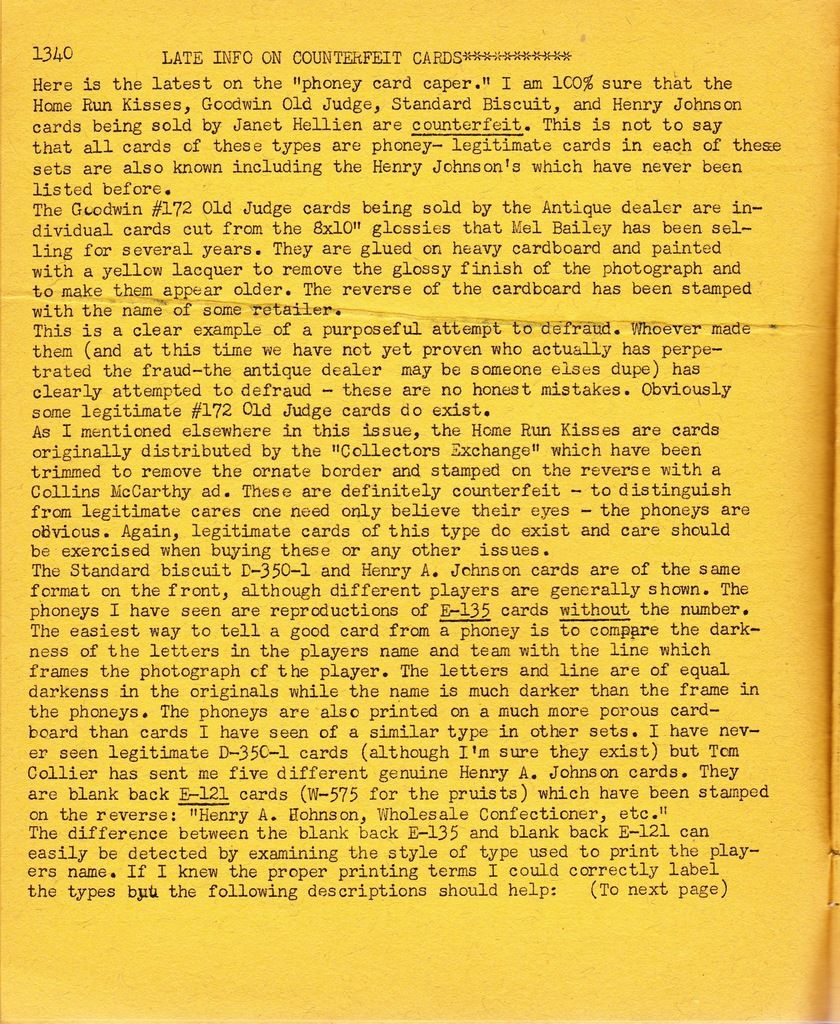
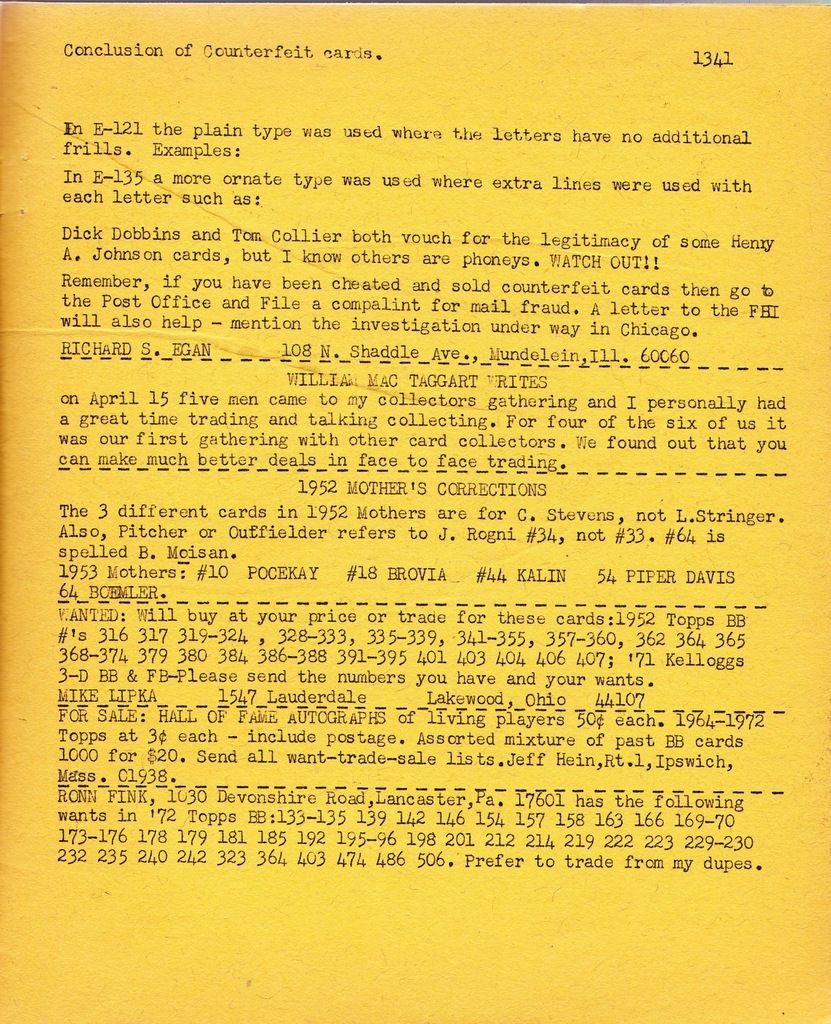
The fake Old Judges were made from glossy photographic prints that collector Mel Bailey had been selling, made from the 8"x10" photos of Old Judges (24 to a sheet) that Goodwin & Company had deposited in the Library of Congress for copyright purposes, as described by Bailey in this article from the April 1970 Trader Speaks:
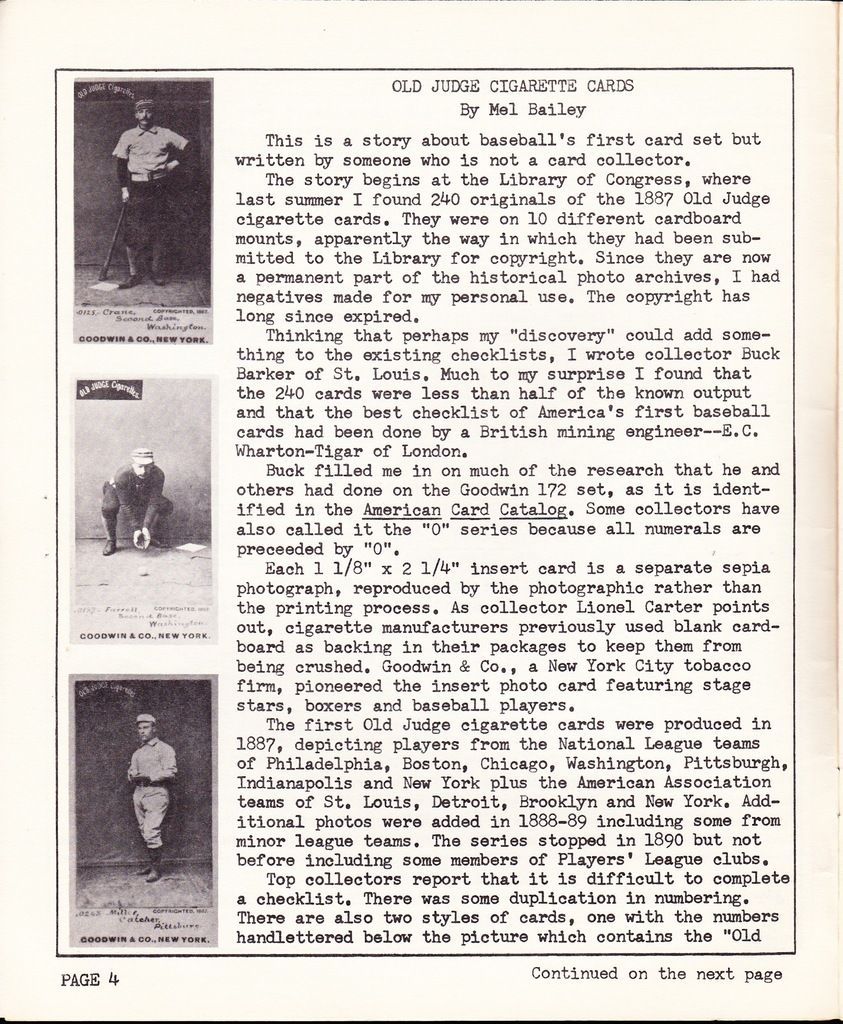
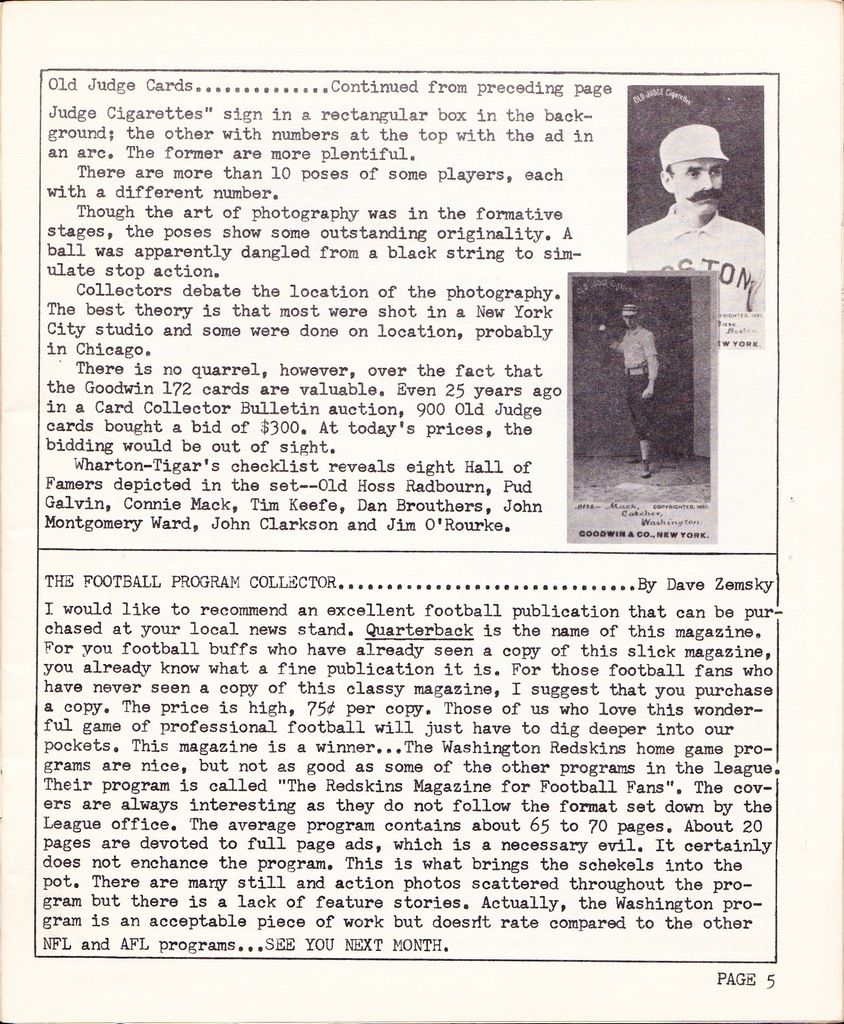
In the next issue of The Ballcard Collector (#81, June 1972), Wirt Gammon mentioned the scandal at the beginning of his front-page column, including "the possibility that some day some party will try to print fakes of the scarcest baseball cards". He expressed confidence that "a man experienced in handling old cards will be able to tell the difference", thus presaging grading services. In another article inside the same issue, Egan gave more details about the counterfeit Henry Johnson cards, which he had determined were TCMA reprints without the reprint notice on the back -- the beginning of the now-common practice of removing such notices from reprint cards and passing them off as genuine.
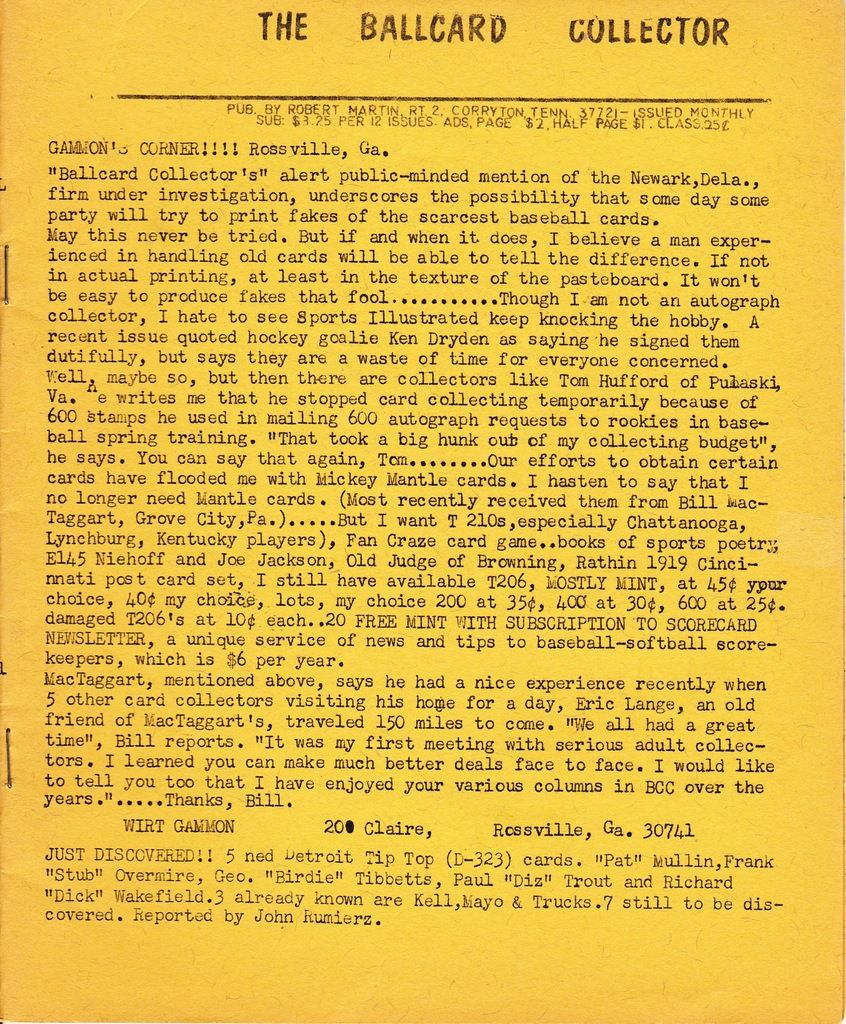
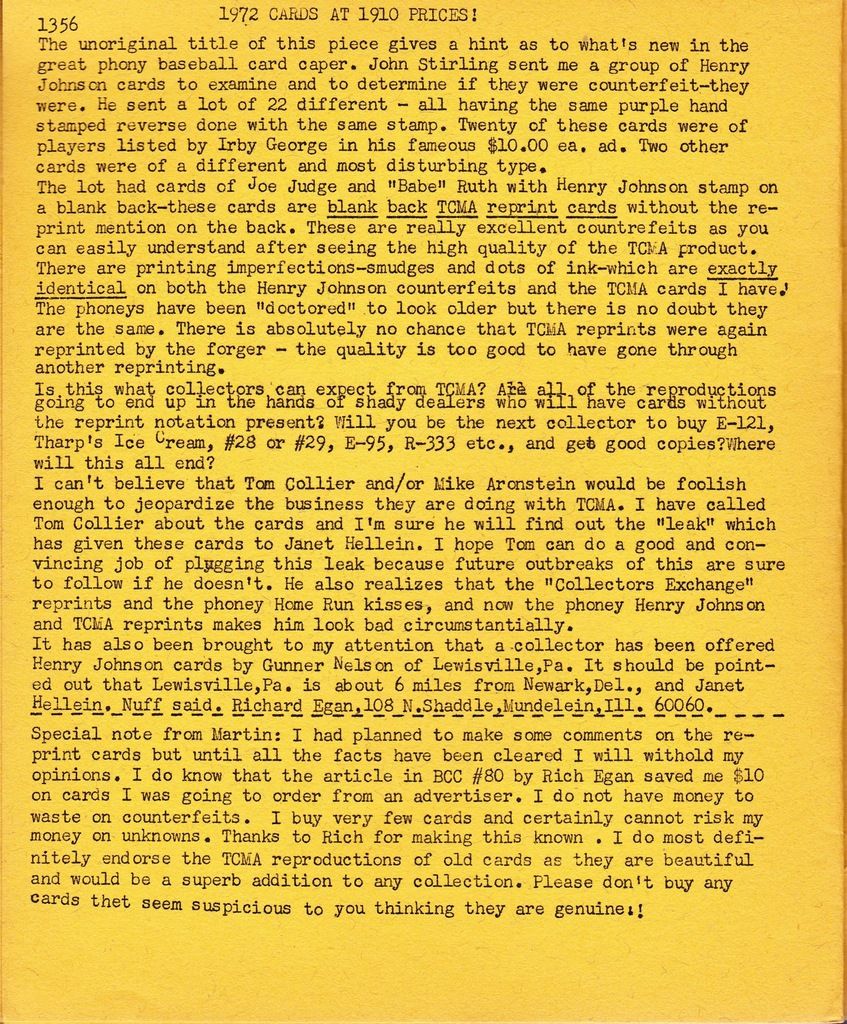
In the September 1972 Ballcard Collector, West Coast collector Jim Nowell reported that fake Zeenut, Remar Bread, and Sommer & Kaufman cards had been sighted. It's not clear whether these came from Janet Hellein, but my guess is that they came from somebody on the West Coast.
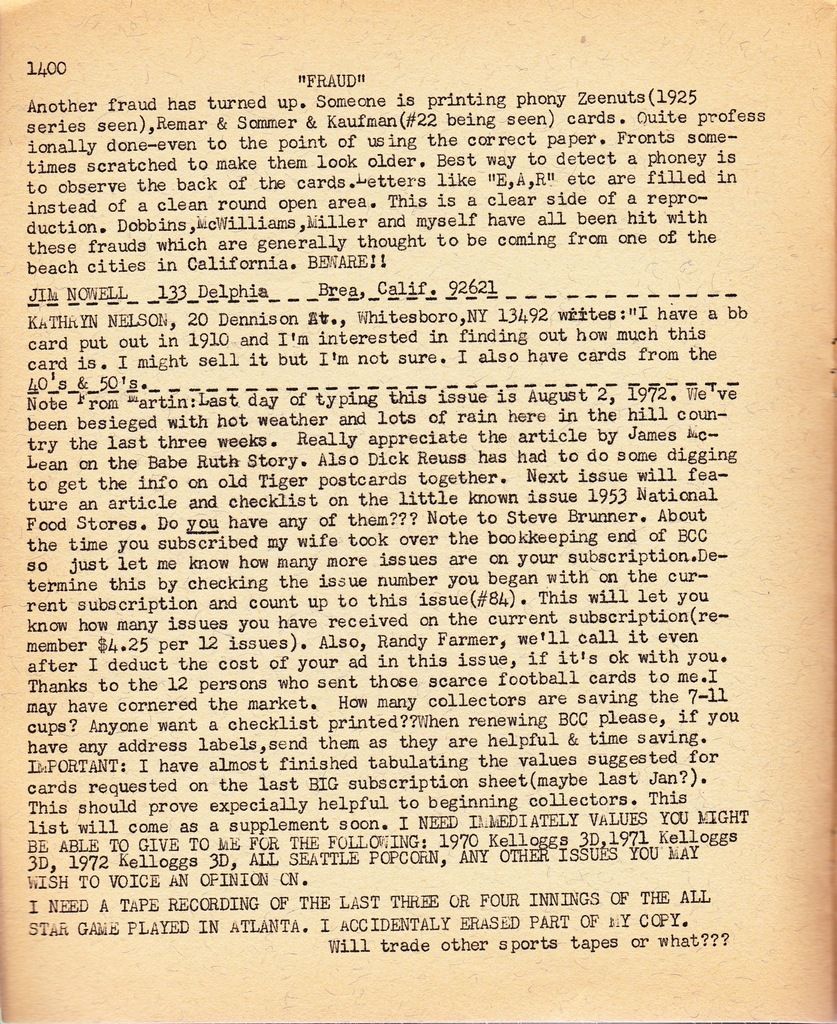
Finally, in the February 1973 Ballcard Collector (#92), Egan reported that some of the fake D350-1 and Henry Johnson cards had shown up in Charles Bray's auction in Card Collector's Bulletin, the beginning of the practice of auction houses being snookered by fakes:
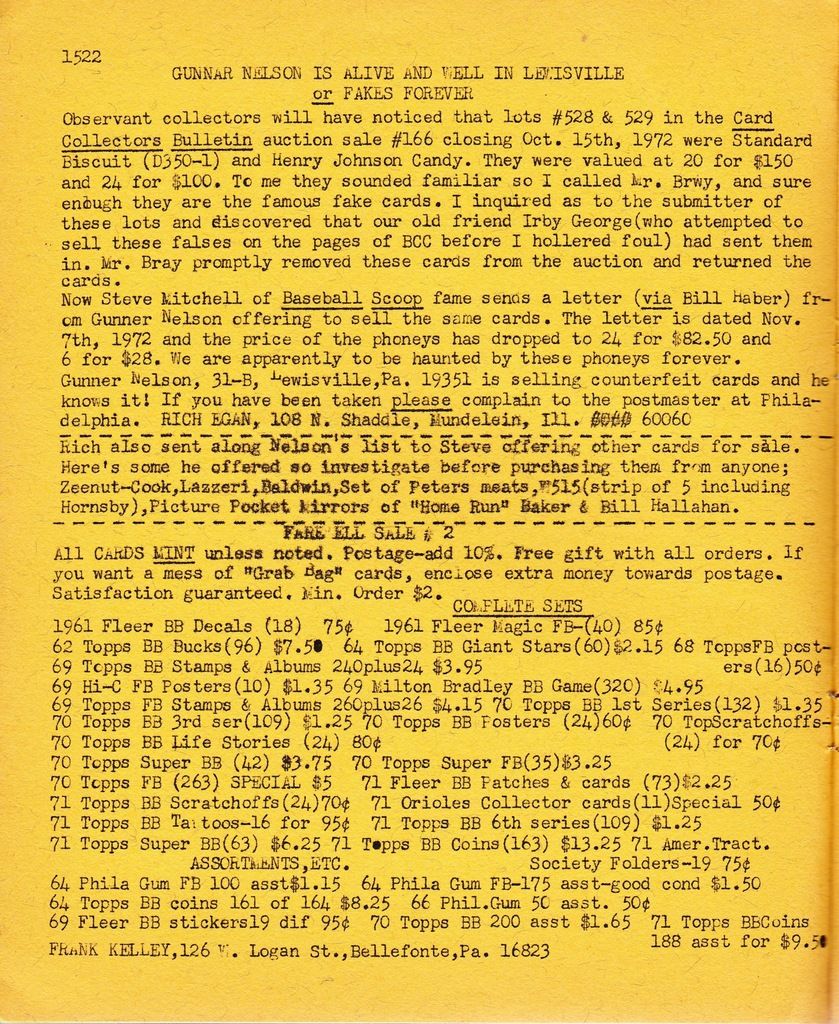
Here is the first page of Lionel Carter's account of the second day of the 1974 Detroit show (July 20, 1974), from the December 1974 issue of Ballcard Collector. It describes how Irv Lerner showed Carter some counterfeit 1959 Fleer Ted Williams #68 cards that somebody had tried to pass off as real. The original post, including Carter's full account of that day, is here:
http://www.net54baseball.com/showthread.php?t=217706. Following that is an article from the July 31, 1974 SCD, probably written by SCD founder John Stommen, giving more details about the fakes.
